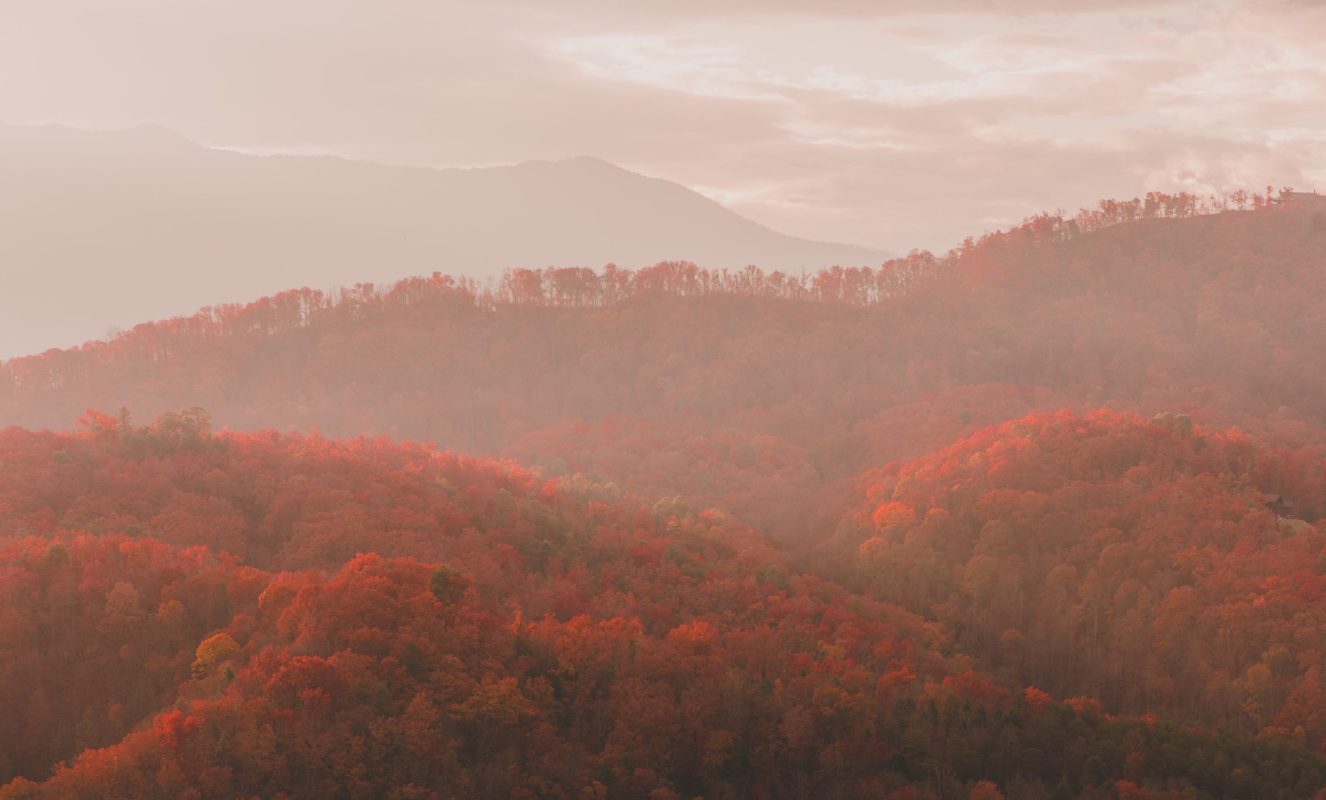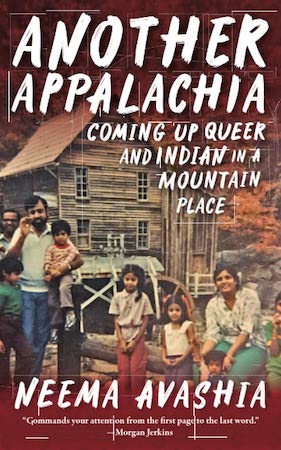When I tell people where I’m from, the reaction is often one of disbelief: “There are Indian people in Appalachia?” Indeed there are, just as there are Black folks in Appalachia, and Indigenous folks in Appalachia, and Mexican and Filipino and Chinese folks in Appalachia. Appalachia, in fact, is a massive region of the United States, as defined by the Appalachian Regional Commission. It spans 423 counties in 13 states, and runs from northern Mississippi to southern New York. 26 million people live within its 206,000 square miles of land. But to far too many people, Appalachia is a much smaller, much more homogenous place. If you relied on the narratives put forth by large publishers and mainstream media sources, you would think Appalachia only meant the states of West Virginia and Kentucky, and that its inhabitants were strictly white, straight, poor, and Christian.
My essay collection is entitled Another Appalachia: Coming Up Queer and Indian in a Mountain Place. I choose the word “another” with intention, because there are many Appalachias, and many versions of Appalachian identity. My experience—of growing up in southern West Virginia as the child of Indian immigrants, and slowly developing an understanding of my queer identity—is only one. There are so many “anothers” in Appalachia—so many people living in ways that subvert stereotypes, and have been subverting them for generations. And their stories are being written by authors who refuse to let stereotypes define the region, and published by incredible small presses like Belt and Hub City, and by university presses at West Virginia University, University of Kentucky, and Ohio University who are committed to this work as well.
I didn’t always know that Appalachia was home to so many “anothers”. I grew up in the ’80s and ’90s thinking, in many ways, that I was “other”, and not “another”. Subject to Confederate flags and racial epithets, it was difficult to understand where I fit into the Appalachian story. And without visible models of queerness, it was so much harder for me to understand my own burgeoning sexuality. In my essays, I write about what it was like to develop a coherent sense of self and identity in the absence of models. I write about the relationships in my life that have both nourished me and starved me, in my quest for authenticity and integrated sense of self. But it is ultimately through reading that I’ve found my identity as an Appalachian, and that I’ve found a community of readers and writers who both embrace and live out anotherness in Appalachia. This list contains just some of the incredible Appalachian writers who are constructing another Appalachian narrative through their words.
Affrilachia by Frank X Walker
Any list about pushing back on the dominant narrative regarding Appalachia has to start with Frank X Walker’s stunning poetry collection about Black Appalachian culture. Reading Walker’s work was the first time I saw someone who wasn’t white staking out a claim to Appalachian identity, and showing readers how Black culture informed and shaped Appalachian culture as a whole. His articulation of Affrilachia gave me permission to consider the relationship between my own identity and the external construction of what it means to be Appalachian. Safe to say, there would be no Another Appalachia without Affrilachia.
Trampoline by Robert Gipe
If you haven’t met Dawn Jewell, the badass protagonist of Robert Gipe’s graphic novel Trampoline, your reading life is incomplete. Dawn is a Kentucky teen who listens to punk music and has a destructive streak, but soon finds herself caught up in her community’s fight against mountaintop removal. Dawn is an accidental radical, a kind of activist who is drawn to the fight not because of theoretical politics, but because of the lived realities she and her family experience each day. Her mix of vulnerability and humor, and her deep love of home will carry you through Trampoline and straight into the sequel, Weedeater.
The Prettiest Star by Carter Sickels
Growing up, I did not know any young people or adults who were open about their LGBTQIA+ identities. In retrospect, I can see that there were folks in my community who were quietly living their truth, but I also know many people for whom leaving was a part of coming out. In The Prettiest Star, Carter Sickels writes about what it means to leave home in search of wholeness and authenticity, only to have to experience the costs of coming home again. Set in Appalachian Ohio during the early years of the AIDS epidemic, this story about how a community responds when one of its members comes home HIV-positive will not leave your mind, even years after you’ve read it.
F*ckface by Leah Hampton
Besides having quite possibly the best book title ever conceived, F*ckface is about what it means to live in post-coal Appalachia, a place where solid union jobs have been replaced by transient service jobs, and where residents’ bodies carry the toxic traces left by the coal and chemical industries. This collection is a kaleidoscope, with each short story offering readers a different lens into what it’s like to live in communities where work has, by and large, disappeared, but people continue to both struggle and persist.
The Harlan Renaissance: Stories of Black Life in Appalachian Coal Towns by Dr. William H. Turner
When the title for my book was announced, the first email I received was from Dr. Turner. He wrote, “If there is anyone who knows what you mean, metaphorically, about ‘Another Appalachia,’ it’s me and legions of family and friends.” Dr. Turner’s book describes the lives of Black families living in Harlan County mining communities during both the coal boom, and the subsequent bust. The erasure of Black communities and Black history from the mainstream narrative around Appalachia has been profound. So profound that as a student educated in West Virginia’s public schools, I didn’t learn about the interracial coalition of miners who united to fight at the Battle of Blair Mountain, or about the fact that the Kanawha Salines, just 15 miles from my home, were mined by people who had been enslaved. Dr. Turner corrects this erasure with his book, centering the stories of Black Appalachian people and communities in a rapidly changing economic context.
Even as We Breathe by Annette Saunooke Clapsaddle
Even as We Breathe is the first book to be published by an enrolled member of the Eastern Band of Cherokee Indians, whose home is in the heart of Appalachia. Cowney, the main character in Clapsaddle’s book, struggles with the same questions that arise for so many young Appalachians: What does it mean when our homes simultaneously nourish and stifle us? What do we gain when we leave? What do we lose? Cowney is accused of a crime early in the story, and while the novel follows this plot line through, the larger questions of identity and belonging that Clapsaddle raises feel just as important as the resolution to Cowney’s story.
Appalachian Reckoning: A Region Responds to Hillbilly Elegy, edited by Anthony Harkins and Meredith McCarroll
This anthology is an entire collection of “anothers”—Appalachian writers from a wide range of identities and geographies who share one thing in common: a deep sense of injustice at the way our home and our people are represented in J.D. Vance’s book, Hillbilly Elegy. Through a mix of essays and creative work, the writers in this collection articulate a much more complex representation of Appalachia, both its beautiful aspects and its messy, hard parts. This book is a necessary counter to both Vance’s oversimplified narrative, and to the rampant stereotypes about Appalachian people that his narrative girds up.

